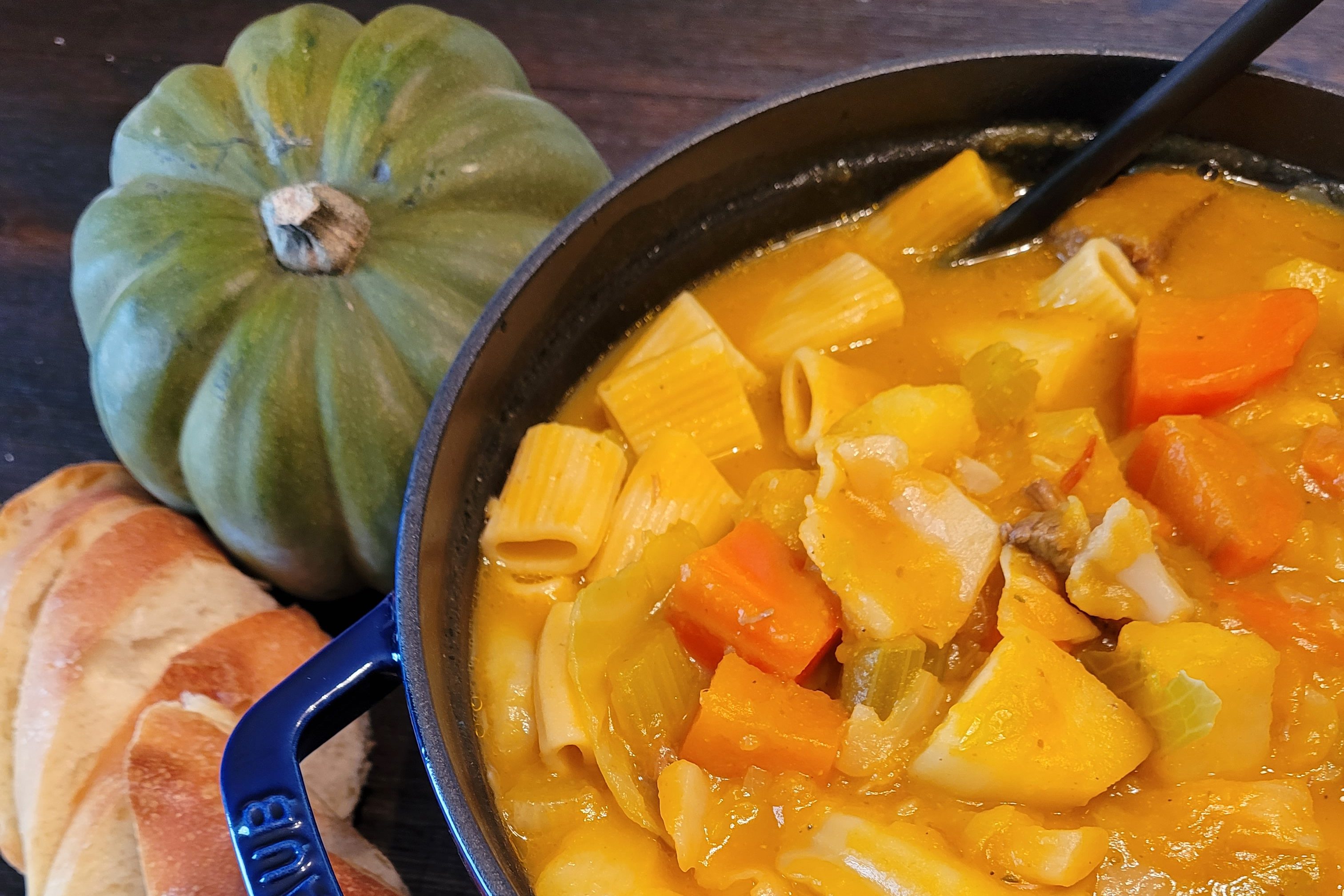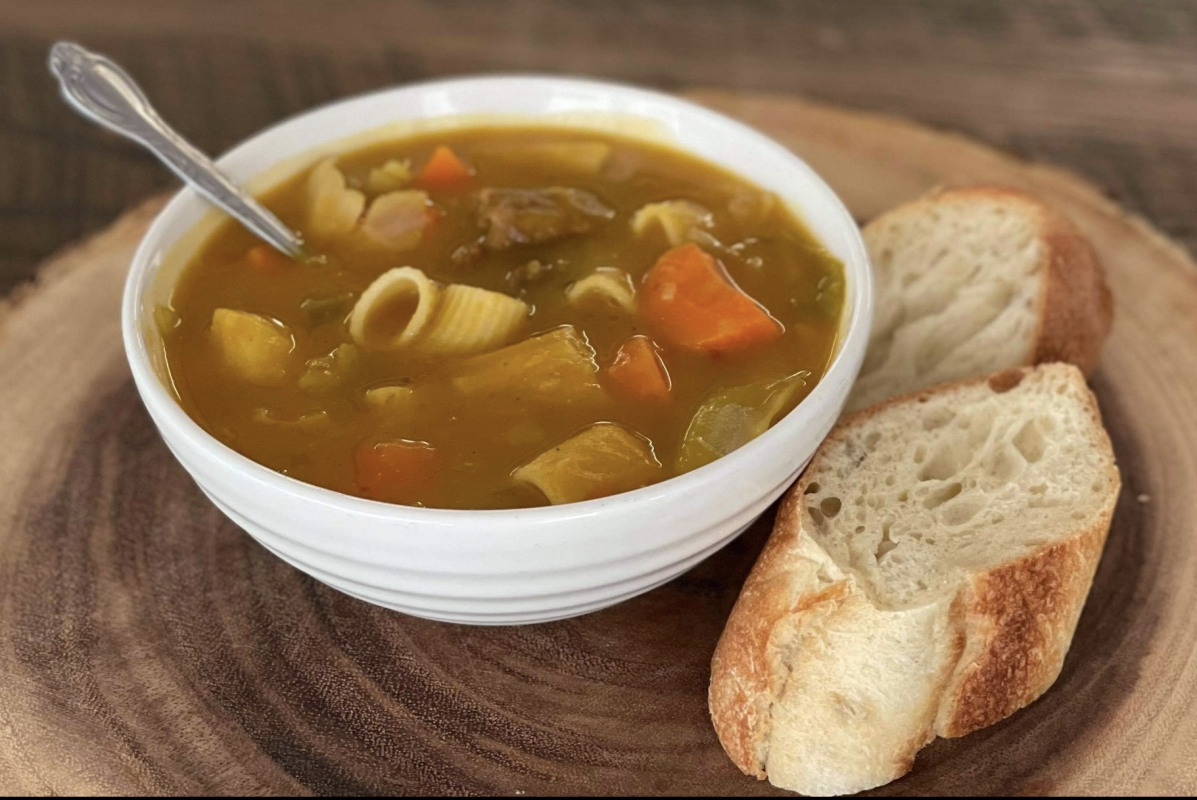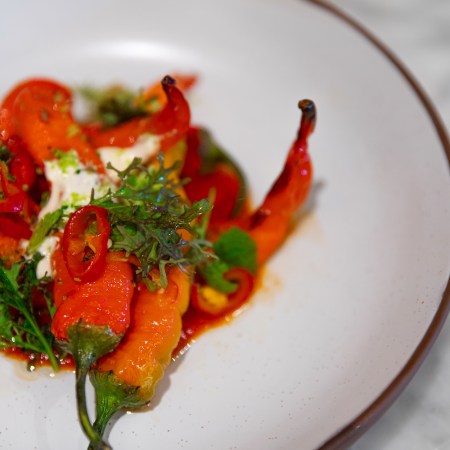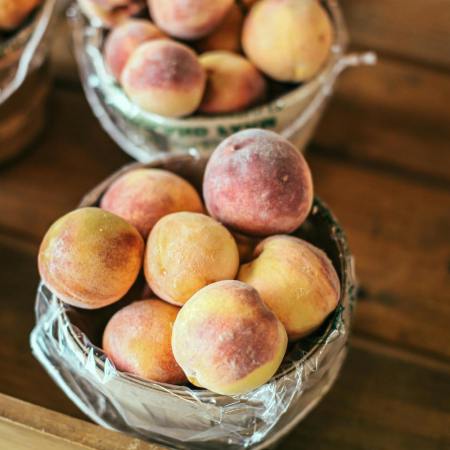Joining traditions like the Inuit drum dancing and singing of Denmark, the grass-mowing competition custom of Bosnia and the reggae music of Jamaica on UNESCO’s Intangible Cultural Heritage list are a number of world-renowned culinary offerings including Italian pizza, Korean kimchi and Turkish coffee.
Just a few months ago, soup joumou (sometimes referred to as giraumon soup) from Haiti was added to the list.
Named for the Haitian squash (which translates to “pumpkin” in English) that typically serves as the core of the dish, soup joumou was prepared by slaves for their French colonizers for hundreds of years. Deemed too uncivilized to appreciate the soup, the slaves were forbidden from having any of the food they had carefully prepared. That changed on January 1, 1804, when revolutionary leader Jean-Jacques Dessalines led a successful rebellion against Haiti’s colonizers and declared his country’s independence from the French. To celebrate their new found freedom, soup joumou’s creators enjoyed the product of their labor for the first time. Since then in recognition of Haitian Independence Day on January 1, soup joumou is made and shared among neighbors, family and friends in Haiti and around the world.
A Massachusetts native who grew up enjoying his family’s traditional Haitian recipes, Chef Chris Viaud now serves up authentic cuisine from his family’s homeland at Greenleaf and Ansanm in Milford, New Hampshire. Among the offerings on the menu authored by Viaud, who made a name for himself as a competitor on the 18th season of Top Chef, is soup joumou.
“On January 1st, we eat the soup for breakfast, lunch and dinner and sometimes into the following week,” Viaud tells InsideHook. “But in a lot of households, it’s a common food that’s made on a daily basis throughout the year. It’s full of flavor, love, and passion and there’s a rich history behind it. It’s definitely amazing to see the recognition that the soup itself has been getting over the past couple of years.”

Viaud knew the history behind the dish and grew up eating it, but only just learned what went into his mom’s soup joumou.
“I can honestly say in my 31 years of life, I do not remember a year I have not eaten the soup,” he says. “It wasn’t until recently that I started to learn what actually goes into it and how to make it myself. Over the past couple of years, I definitely have been leaning more towards doing a fusion of what I’ve learned in my culinary training and diving more into my heritage through food. I’m still learning my food identity and seeing where I can now adapt some of the things that I have been learning from my parents about Haitian cuisine.”
And although not all the traditional ingredients Viaud’s family used in Haiti are available in New Hampshire, the young chef is still able to make an authentic soup joumou because one thing his area is not short on is squash.
“Joumou absolutely needs to have squash in it,” he says. The most relative one we can find up here is actually kabocha squash. Oftentimes we get that from a local farm and use that as a base. If you can’t find that one, then butternut squash is close. It has that rich sweetness and starchiness, The squash pairs with the remainder of the vegetables, which include onion, celery, garlic, potatoes, leeks, carrots, cabbage and turnips. It’s just a hearty root vegetable soup.”
Here’s how to make it at home.
Chef Chris Viaud’s Soup Joumou
Ingredients
- 1 ½ pounds of beef stew meat (optional)
- 2 tbsp oil
- 1 medium yellow onion, diced
- 3 cloves of garlic, crushed
- 4 stalks of celery, diced
- About 2 pounds of butternut squash, peeled then chopped into ½ inch cubes
- 1 cup of leeks
- 2 large carrots, peeled then cut into small pieces
- 2 golden potatoes, peeled and cut into ½ inch pieces sliced thin
- ½ of a head of green cabbage
- 1 turnip, peeled and cut into ½ inch pieces
- 2 stems of parsley
- 4 sprigs of thyme
- 6-8 cups of vegetable broth (can also use chicken or beef broth)
- Juice of 1 lime
- ½ pound of rigatoni
- 2 tbsp of butter
- Salt & Pepper to taste
- Cooking twine (to wrap the parsley & thyme together)
Instructions
- Add the broth and squash to a large pot and bring to a boil.
- Cook until squash is soft.
- In a separate pot, cook the rigatoni al dente (do not cook all the way through).
- Make a bouquet with the parsley and thyme, tied with the cooking twine.
- While squash is cooking, in a different large pot, add oil and allow to get hot.
- Add the meat and brown on all sides (add seasonings of choice).
- Let cook for about 10 minutes.
- Remove meat from pot and set aside, leaving oil in the pot.
- **note, if not using meat, add oil to pot, and skip to step 4.
- Add onions, garlic, and leeks to hot oil and let cook until soft and golden brown.
- Add the celery next, stirring frequently.
- Add carrots and stir.
- Add the cooked squash to a blender or food processor and puree the squash.
- Do not discard the water in which the squash was boiled (you’ll be using that water in the next steps).
- Add the pureed squash to onion/leek/carrots mixture.
- Add in reserved liquid from the squash to “thin” out the soup to your liking. (This soup can range from thin to very thick so add in the liquid accordingly). If too thick add more of the reserved liquid or some more broth.
- Bring to a boil.
- Add in the potatoes, turnip, and parsley bouquet.
- Let cook for 6-8 minutes, then add in the cabbage.
- Cover and simmer for an additional 15 minutes.
- Add in the cooked meat, then stir (if not adding in meat, skip to adding the pasta).
- Add in the cooked pasta and lime juice, then stir.
- Let simmer for another 10 minutes. Add salt and pepper to taste.
- Add butter, then stir.
Notes
- This soup can be made as a vegetarian dish if desired or beef stew meat can be added.
- Yields 8 Servings, 2 cups per serving
Join America's Fastest Growing Spirits Newsletter THE SPILL. Unlock all the reviews, recipes and revelry — and get 15% off award-winning La Tierra de Acre Mezcal.






















